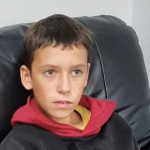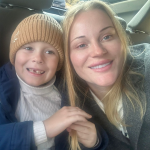Natural Talent: Reasons for the Tendency of Children with Autism to Play Chess
The ancient game of chess often becomes a true passion for children with autism, deeply engaging them. There are several reasons why many autistic children achieve great success in chess, not only at an amateur level but also professionally. The main explanation lies in their unique cognitive and perceptual abilities. However, there are multiple factors that contribute to the popularity of chess among individuals with autism.
- Clear Rules and Structure
Chess is governed by strict, unchanging rules. For individuals with autism, who may react negatively to uncertainty and unexpected changes in social situations, these predictable and structured rules are highly attractive. The rules define what actions should be taken and allow players to anticipate the consequences of their decisions. - Logic and Systematic Thinking
While intuition can sometimes guide a chess game, the key factors in playing chess are logical thinking, understanding cause-and-effect relationships, and following a chosen strategy. Many autistic individuals have strong analytical abilities and a tendency for systematic thinking. Their cognitive strengths allow them to easily develop combinations, assess options, and evaluate the positions of pieces on the board. - Minimization of Social Interaction
Unlike many other games or sports, chess requires minimal direct communication and contact. The interpretation of non-verbal signals (such as tone of voice, facial expressions, and gestures) is irrelevant. Communication in chess happens through moves on the board, which significantly reduces social stress and anxiety. Autistic individuals quickly realize that they can interact by focusing on the logic of the game, not on social norms, which helps them feel more at ease. - Focus on Objects
Chess allows players to concentrate fully on specific, tangible objects—the board and pieces. This matches the tendency of many individuals with autism to intensely focus on things that interest them. The game engrosses attention, providing a sense of comfort and control. - Visual-Spatial Thinking
Chess requires the development of strong visual-spatial intelligence. A player must be able to imagine the placement of pieces, view the board “from above,” and foresee movements within space. Many individuals with autism excel in visual-spatial thinking, making them naturally suited to the game. - Schematics and Repetition
Chess places a great emphasis on clear sequences of moves—opening strategies, subsequent variations, typical piece positions leading to check or checkmate, and tactical tricks. Recognizing, studying, and applying these patterns can be very engaging for autistic individuals, who are often drawn to repetitive structures. - Tactile Predictability and Control
Chess pieces can be pleasant to touch, and this tactile feedback is an important sensory experience. The act of moving the pieces according to strict rules provides a sense of control over the environment. - Depth and Opportunities for In-Depth Study
Chess is an incredibly complex game, offering a wealth of information for study. This includes opening theories, endgame strategies, and the analysis of games played by grandmasters. Autistic individuals often have a tendency to dive deeply into topics they are interested in, and chess provides ample opportunities to satisfy their intellectual curiosity. - Objectivity in Determining the Winner
The outcome of a chess game is always objective, with only three possible results: loss, win, or draw, according to the rules. Each player, if not checkmated, can acknowledge their victory, defeat, or suggest a draw. There is no room for subjectivity or ambiguity, and these clear conditions align with the needs of individuals with autism for certainty and clarity. - Calm and Controlled Environment
Chess games take place in quiet and controlled environments. Even major chess tournaments are held in calm settings with minimal sensory distractions (no bright lights, loud sounds, or crowds of people), which can be particularly beneficial for those with sensory hypersensitivity.
Overall, the combination of structure, logic, visual-spatial skills, reduced social demands, and intellectual engagement makes chess especially attractive to many individuals with autism. Through this game, they can develop their strengths and find joy in their achievements. Even at the amateur level, chess can serve as a powerful tool for development and socialization in a comfortable environment, boosting self-esteem.
It is important to note that not all individuals with autism are interested in chess, and not all chess masters have neurodevelopmental disorders. Additionally, exceptional talent in a particular activity, such as chess, may serve as compensation for underdeveloped skills in other areas for individuals with autism. Therefore, it is crucial to address the disorder and its symptoms in order to lead a fulfilling and enriched life while maintaining unique talents.
Cellular Therapy: A Way to Address Autism and Its Symptoms
The most reliable and efficient way to address autism and its symptoms in the shortest possible time is through cellular therapy—an innovative procedure that provides far more impressive results than traditional methods. This therapy involves the transplantation of stem cells, which can transform into any other type of cell, replacing damaged cells with healthy counterparts.
Because stem cells are taken from the patient’s own body, rejection of the transplanted material is excluded, as the immune system does not respond to them. As a result of this natural process, the brain and nervous system begin to function normally, and behavior becomes more stable, predictable, and appropriate. Development accelerates, individual functions improve, and the manifestations of autism become less pronounced, often disappearing entirely. These positive changes are long-lasting and, in many cases, permanent, which enhances the effectiveness of other corrective measures.
Cellular therapy, which was once considered an experimental approach, has now received positive evaluations and widespread recognition. It may eventually become the main method of treating autism and its symptoms. At present, it is only available at the best clinics in the world, which have highly qualified specialists and state-of-the-art equipment. One such clinic is the Mardaleishvili Medical Center, where the level of care meets the highest international standards, yet the cost is lower than in other countries. The clinic’s staff can also assist with travel planning and addressing various needs related to accommodation during the rehabilitation period.
Take advantage of cellular therapy—it can free you from the disorder while preserving your unique personal traits!
Autism Treatment Center Videos
Autism treatment with own stem cells
Cord blood association congress
International Quality Crown
Autism Treatment Reviews
Autism treatment with own stem cells
The story of Alessandro (6 years old)
Autism Patient Testimonial - Stem Cell Treatment
Clients Testimonials

Review by Anastasia, mother of Yusup (8 years old) Read More

Feedback from Nathalie, mother of Andre (9 years old) Read More

Feedback from Yulia, mother of Emily (7 years old) Read More

Feedback by Everita, Katrina’s mother (5 years old) Read More

Feedback from Igor, David’s father (12 years old) Read More












